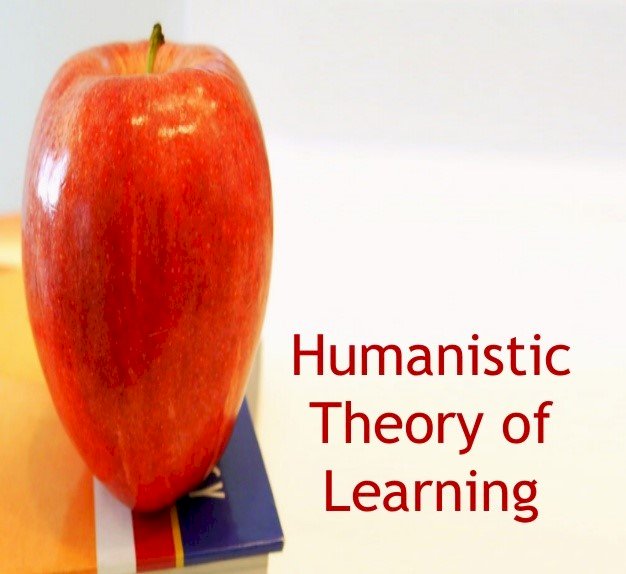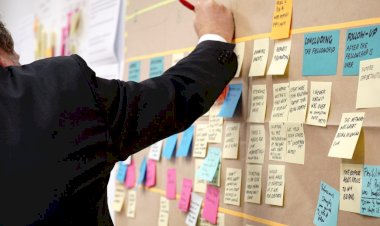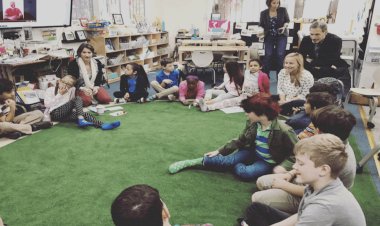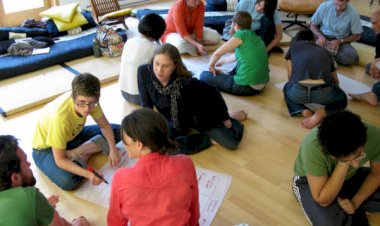Humanistic Education and Its concepts According to Abraham Maslow and Carl Rogers

Humanistic Education and Its concepts According to Abraham Maslow and Carl Rogers
Nana Aleksidze
2020

Humanistic education (also called person-centered education) is an approach to education based on the work of humanistic psychologists, most notably Abraham Maslow and Carl Rogers.
The basic concern of the theory is the human potential oriented for growth. Personal freedom, choice, motivations and feelings had to have their place.
The humanistic approach places a great deal of emphasis on students' choice and control over the course of their education. Humanistic teachers believe it is important for students to be motivated and engaged in the material they are learning, and this happens when the topic is something the students need and wants to know.
In the mid-1950s, humanistic psychologist Abraham Maslow created a theory of basic, psychological and self-fulfillment needs that motivate individuals to move consciously or subconsciously through levels or tiers based on our inner and outer satisfaction of those met or unmet needs.
Abraham Maslow's Hierarchy of Needs pyramid.

Level one: Physiological needs such as hunger, thirst, and other physiological needs must be satisfied before the next level comes into play.
Level two: Safety needs call for a predictable and orderly world. If satisfied, people will come under the force of level three.
Level three: Love and belonginess needs cause people to seek warm and friendly relationships.
Level four: Self-esteem needs involve the desire for strength, achievement, adequacy, mastery and competence. They also involve confidence, independence, reputation and prestige.
Level five: Self-actualization is the full use and expression of talents, capacities and potentialities.
The bottom two levels reflect basic needs, the next two reflect psychological needs, and top reflects self-fulfillment needs.
Learning can, thus, be seen as a form of self-actualization, it contributes to psychological health. Yet while self actualization may be seen as the primary goal, other goals (linked to the other stages) are also around. These include a sense of accomplishment and the controlling of impulses.
Humanistic psychology’s positive view of people and their ability to control their own destiny, and the seemingly unlimited possibilities for individual development provided some hope for educators.
Perhaps the most persuasive exploration of a humanistic orientation to learning came from Carl Rogers. He has been called. the "Father of Humanistic Psychology" and devoted much of his efforts toward applying the results of his psychological research to person-centered teaching where empathy, caring about students, and genuineness on the part of the learning facilitator were found to be the key traits of the most effective teachers. He saw the following elements as being involved in significant or experiential learning.
- Personal involvement—the whole person in both feeling and cognitive aspects being in the learning event.
- Self-initiation--Even when the impetus or stimulus comes from the outside, the sense of discovers of reaching out, of grasping and comprehending, comes from within.
- Evaluation by the learner—one knows whether it is meeting his/her need, whether it leads toward what he/she wants to know, whether it illuminates the dark area of ignorance she is experiencing.
- Essence is meaning-- When such learning takes place, the element of meaning to the learner is built into the whole experience.
Development of the personality
With regard to development, Rogers described principles rather than stages. The main issue is the development of a self-concept and the progress from an undifferentiated self to being fully differentiated.

Carl Rogers listed the characteristics of a fully functioning person
- Freedom of choice – not being shackled by the restrictions that influence an incongruent individual, they are able to make a wider range of choices more fluently. They believe that they play a role in determining their own behavior and so feel responsible for their own behavior.
- Creativity – it follows that they will feel freer to be creative. They will also be more creative in the way they adapt to their own circumstances without feeling a need to conform.
- Reliability and constructiveness – they can be trusted to act constructively. An individual who is open to all their needs will be able to maintain a balance between them.
Humanistic teachers believe it is important for students to be motivated and engaged in the material they are learning, and this happens when the topic is something the students need and wants to know. Students are encouraged to make choices that range from day-to-day activities to periodically setting future life goals. This allows for students to focus on a specific subject of interest for any amount of time they choose, within reason.
Felt Concern in the humanistic theory
Humanistic education tends to focus on the felt concerns and interests of the students intertwining with the intellect. Humanistic educators believe that both feelings and knowledge are important to the learning process. It is believed that the overall mood and feeling of the students can either hinder or foster the process of learning. Unlike traditional educators, humanistic teachers do not separate the cognitive and affective domains
Cognitive domain means “thinking”, involves mental processes. From the Latin cogito; 'I think' and deals with the process and measurable results of study, as well as the practical ability to apply intelligence.
Affective domain deals with emotions and feeling, includes factors such as student motivation, attitudes, perceptions and values.
Yet the affective domain can significantly enhance, inhibit or even prevent student learning. Teachers can increase their effectiveness by considering the affective domain in planning courses, delivering lectures and activities, and assessing student learning. This aspect also relates to the curriculum in the sense that lessons and activities provide focus on various aspects of the student and not just rote memorization through note taking and lecturing.
Humanistic educators believe that grades are irrelevant and that only self-evaluation is meaningful. Grading encourages students to work for a grade and not for intrinsic satisfaction. Humanistic educators disagree with routine testing because they teach students rote memorization as opposed to meaningful learning. They also believe testing doesn't provide sufficient educational feedback to the teacher.
Carl Rogers was a gifted teacher. His approach grew from his orientation in one-to-one professional encounters. He saw himself as a facilitator – one who created the environment for engagement. This he might do through making a short (often provocative, input). However, what he was also to emphasize was the attitude of the facilitator. There were ‘ways of being’ with others that foster exploration and encounter – and these are more significant than the methods employed.
Rogers described the learner-centered teaching approach in education and presented teacher as a Facilitator.
Carl Roger's View (Facilitative Teaching)
Teachers who were more highly facilitative tended to provide more:
- response to student feeling;
- use of student ideas in ongoing instructional interactions;
- discussion with students (dialogue);
- praise of students;
- congruent teacher talk (more relevant and much less ritualistic);
- tailoring of contents to the individual student's frame of reference (explanations created to fit the immediate needs of the learners); and
- Smiling with students.
The tutor or lecturer tends to be more supportive than critical, more understanding than judgmental, more genuine than playing a role. Their job is to foster an engaging environment for the students and ask inquiry-based questions that promote meaningful learning.
Rogers had the following hypotheses regarding learner-centered education.
- “A person cannot teach another person directly; a person can only facilitate another's learning”.
- Each person reacts and responds based on perception and experience. The belief is that what the student does is more important than what the teacher does. The focus is on the student Therefore, the background and experiences of the learner are essential to how and what is learned.
- A person learns significantly only those things that are perceived as being involved in the maintenance of or enhancement of the structure of self. Therefore, relevancy to the student is essential for learning. The students' experiences become the core of the course.
- It is important, for this reason, that new information be relevant and related to existing experience. If the content or presentation of a course is inconsistent with preconceived information, the student will learn if he or she is open to varying concepts. Therefore, gently encouraging open-mindedness is helpful in engaging the student in learning.
- If students believe that concepts are being forced upon them, they might become uncomfortable and fearful. A barrier is created by a tone of threat in the classroom. Therefore, an open, friendly environment in which trust is developed is essential in the classroom.
Realness in the facilitator of learning- Perhaps the most basic of these essential attitudes is realness or genuineness. When the facilitator/teacher is a real person, being what she is, entering into a relationship with the learner without presenting a front or a façade, she is much more likely to be effective. This means that the feelings that she is experiencing are available to her, available to her awareness, that she is able to live these feelings, be them, and able to communicate if appropriate. It means coming into a direct personal encounter with the learner, meeting her on a person-to-person basis.
Prizing, acceptance, trust- There is another attitude that stands out in those who are successful in facilitating learning:
- It is a caring for the learner, but a non-possessive caring.
- It is an acceptance of this other individual as a separate person, having worth in her own right.
- It is a basic trust – a belief that this other person is somehow fundamentally trustworthy… What we are describing is a prizing of the learner as an imperfect human being with many feelings, many potentialities.
The facilitator’s prizing or acceptance of the learner is an operational expression of her essential confidence and trust in the capacity of the human organism.
Empathic understanding--A further element that establishes a climate for self-initiated experiential learning is emphatic understanding. When the teacher has the ability to understand the student’s reactions from the inside, has a sensitive awareness of the way the process of education and learning seems to the student, then again the likelihood of significant learning is increased.
Relationship-The strength of Rogers’ approach lies in part in his focus on relationship. As he once wrote, ‘The facilitation of significant learning rests upon certain attitudinal qualities that exist in the personal relationship between facilitator and learner’. He offered several hypothesized general principles. In the notion of ‘student-centered teaching’ he included:
- We cannot teach another person directly; we can only facilitate his learning.
- The structure and organization of the self appears to become more rigid under threat; to relax its boundaries when completely free from threat…
- The educational situation which most effectively promotes significant learning is one in which 1) threat to the self of the learner is reduced a minimum, and 2) differentiated perception of the field of experience is facilitated.
In this we can see something of Rogers’ debt to Dewey – but something else had been added in his particular concern with experience and selfhood.
- First, there is an interest in looking at the particular issues, questions and problems that participants bring (this is not a strongly curriculum -based orientation and has some parallels with the subsequent interest in self-direction in learning).
- Second, he draws in insights from more psychodynamic traditions of thinking
Humanistic view in Open Education
There are a variety of ways teachers can implement the humanist view towards education. Some of these include:
- Allow the student to have a choice in the selection of tasks and activities whenever possible.
- Help students learn to set realistic goals.
- Have students participate in group work, especially cooperative learning, in order to develop social and affective skills.
- Act as a facilitator for group discussions when appropriate.
- Be a role model for the attitudes, beliefs and habits you wish to foster. Constantly work on becoming a better person and then share yourself with your students
Thus, when applied to the realm of education, is concerned primarily with promoting in students an interest in learning, a valuing of education, and a confidence in their own capacities and attributes. These outcomes are manifestations of being intrinsically motivated and internalizing values and regulatory processes. Ready to ask the questions to “myself”.
- What is my purpose in life?
- What are the challenges in reaching my purpose and the lives of others?
- How can I serve the world?
- Why is there conflict and war? What can I do? What can we do?
Seeking the answers to them through the immense role of person centric education by means of self actualization to evaluate the self growth and reach the self –realization.













